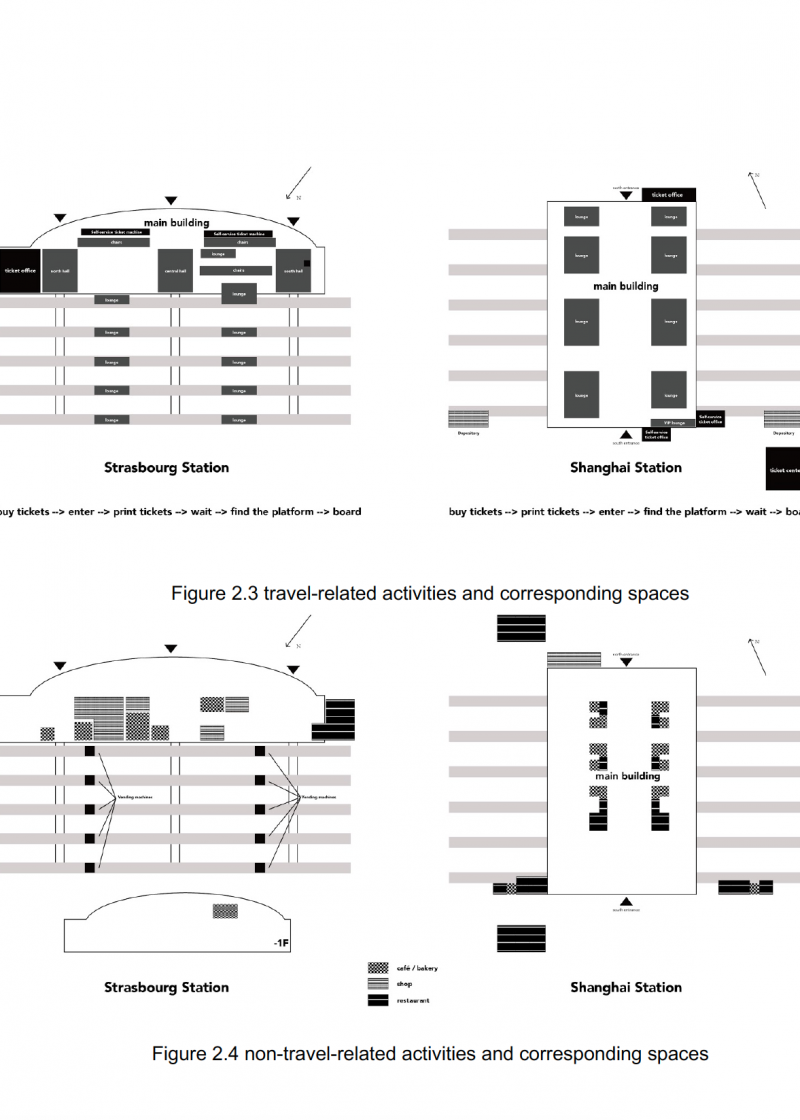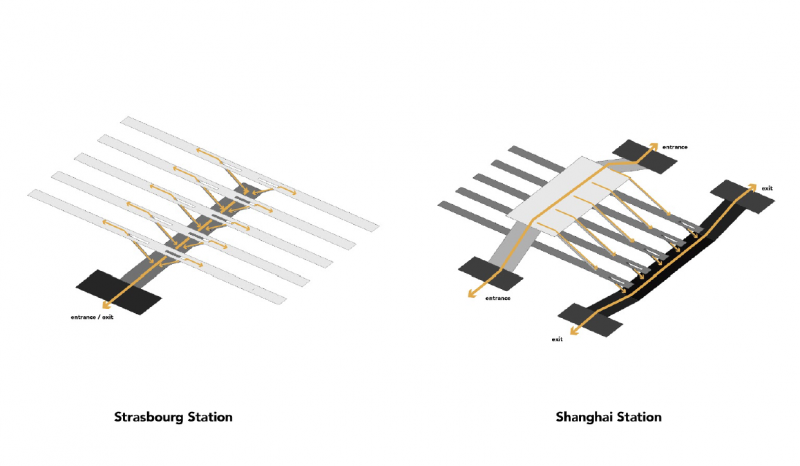Between Node And Place. Defining the Relationship of Train Stations with their Surroundings
NB: This article was written as a short joint research exercise, preliminary to Master Thesis work.
Both China and France have highly-developed rail transportation systems. However,because of historical and social differences, the two systems show a great distinction. One of the examples is the design logic of railway station: “French stations are thought back and are integrated in the urban structure while Chinese stations are more focused on the efficiency of transport services” (C. Mazzoni, 2016).
Based on this hypothesis, this paper takes Shanghai station and Strasbourg station as an example to define the two types of logic and ask what kind of external influence could these two logics of functioning exert on the surrounding urban space. We will first define the logic of functioning of each station based on three factors: activities, flow management and modality.
Then, the comparison of their surroundings urban space will be observed from three aspects: transit, land-use and temporary activities. Finally, we discuss the characteristics of these two stations based on the concepts of « node » and « place » (Bertolini, 1999).







